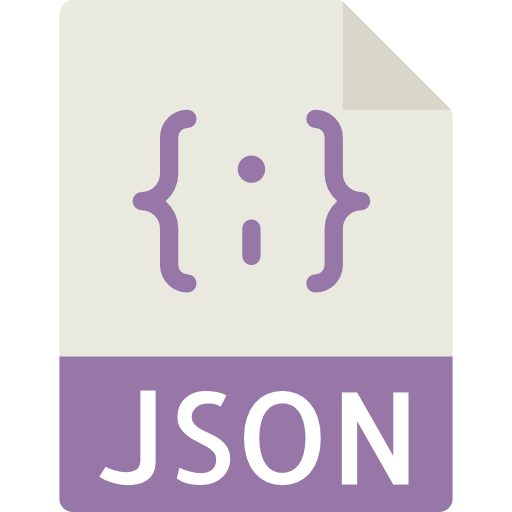Summarize this article with:



Building your pipeline or Using Airbyte
Airbyte is the only open source solution empowering data teams to meet all their growing custom business demands in the new AI era.

- Inconsistent and inaccurate data
- Laborious and expensive
- Brittle and inflexible

- Reliable and accurate
- Extensible and scalable for all your needs
- Deployed and governed your way
Start syncing with Airbyte in 3 easy steps within 10 minutes
Take a virtual tour
Demo video of Airbyte Cloud
Demo video of AI Connector Builder
Setup Complexities simplified!
Simple & Easy to use Interface
Airbyte is built to get out of your way. Our clean, modern interface walks you through setup, so you can go from zero to sync in minutes—without deep technical expertise.
Guided Tour: Assisting you in building connections
Whether you’re setting up your first connection or managing complex syncs, Airbyte’s UI and documentation help you move with confidence. No guesswork. Just clarity.
Airbyte AI Assistant that will act as your sidekick in building your data pipelines in Minutes
Airbyte’s built-in assistant helps you choose sources, set destinations, and configure syncs quickly. It’s like having a data engineer on call—without the overhead.
What sets Airbyte Apart
Modern GenAI Workflows
Move Large Volumes, Fast
An Extensible Open-Source Standard
Full Control & Security
Fully Featured & Integrated
Enterprise Support with SLAs
What our users say

Andre Exner

"For TUI Musement, Airbyte cut development time in half and enabled dynamic customer experiences."

Chase Zieman

“Airbyte helped us accelerate our progress by years, compared to our competitors. We don’t need to worry about connectors and focus on creating value for our users instead of building infrastructure. That’s priceless. The time and energy saved allows us to disrupt and grow faster.”

Rupak Patel

"With Airbyte, we could just push a few buttons, allow API access, and bring all the data into Google BigQuery. By blending all the different marketing data sources, we can gain valuable insights."
- Install n8n: If you haven’t already, install n8n on your system or use the n8n cloud version. You can find installation instructions on the official n8n documentation.
- Start n8n: Run n8n by executing the command n8n start in your terminal or by starting your n8n instance in the cloud.
- Access n8n Editor UI: Open your web browser and navigate to http://localhost:5678 or the URL provided by your cloud instance.
- Create a New Workflow: Click on the “+” button or select “New” from the left sidebar to create a new workflow.
- Name Your Workflow: Click on the name at the top to rename your workflow. For example, “Data to JSON”.
- Add a Trigger Node: Depending on how you want to trigger the data retrieval, add a trigger node. This could be an HTTP Request node for webhooks, a Cron node for scheduled tasks, or any other trigger that suits your needs.
- Configure Trigger Node: Set up the trigger node according to your requirements (e.g., set the cron time or configure the webhook URL).
- Add Process Nodes: If you need to process or transform the data before converting it to JSON, add the necessary nodes (e.g., Function node, Set node, etc.).
- Configure Process Nodes: Implement the logic for data processing within these nodes.
- Add a Function Node: Drag a Function node onto the canvas.
- Configure Function Node: Double-click the Function node to configure it. Here, you can write JavaScript code to format your data as JSON. For example:
let jsonData = {
data: items.map(item => item.json)
};
return [{json: jsonData}]; - Test Function Node: Click “Execute Node” to test the Function node and ensure it outputs the correct JSON format.
- Add a Write Binary File Node: Drag a Write Binary File node onto the canvas.
- Configure Write Binary File Node: Double-click the node and set the following:
- File Name: Specify the name of the JSON file (e.g., data.json).
- File Type: Set to ‘JSON’.
- Binary Property: Use the default data or specify the property name that holds the binary data from the previous node.
- Connect Nodes: Connect the output of the Function node to the input of the Write Binary File node.
- Execute Workflow: Click on the “Execute Workflow” button to run the workflow and write the JSON file.
- Save Workflow: Click the “Save” button to save your workflow.
- Activate Workflow: Toggle the “Active” switch to activate your workflow if it’s triggered by events (e.g., Webhook, Cron).
- Test the Trigger: If your workflow is event-based, test the trigger to ensure it starts the workflow correctly.
- Check JSON File: Once the workflow has been executed, check the specified path for the data.json file to confirm that the data has been written correctly.
- Add Error Handling: You can add error handling nodes to manage any errors that occur during the workflow execution.
- Add Logging: Use nodes like the Set node to log messages or data at various points in the workflow for debugging purposes.
FAQs
What is ETL?

ETL, an acronym for Extract, Transform, Load, is a vital data integration process. It involves extracting data from diverse sources, transforming it into a usable format, and loading it into a database, data warehouse or data lake. This process enables meaningful data analysis, enhancing business intelligence.

N8n is a free and open fair-code distributed node-based Workflow Automation Tool. You can self-host n8n, easily extend it, and even you can use it. n8n is an extendable workflow automation tool that enables you to connect anything to everything via its open, fair-code model. Berlin, Germany n8n. With a fair-code distribution model, n8n will always have visible source code, be available to self-host, and allow you to add your own custom functions, logic, and apps.

N8n's API provides access to a wide range of data types, including:
1. Workflow data: This includes information about the workflows created in n8n, such as their names, descriptions, and trigger events.
2. Node data: This includes data related to the individual nodes used in workflows, such as their names, types, and configurations.
3. Execution data: This includes information about the execution of workflows, such as the start and end times, the status of each node, and any errors encountered.
4. Credentials data: This includes data related to the credentials used to authenticate with external services, such as API keys and access tokens.
5. Workflow run data: This includes data related to the runs of individual workflows, such as the input and output data, the status of each node, and any errors encountered.
6. Node run data: This includes data related to the runs of individual nodes within workflows, such as the input and output data, the status of the node, and any errors encountered.
Overall, n8n's API provides access to a comprehensive set of data types that can be used to monitor and manage workflows, troubleshoot issues, and optimize performance.

What is ELT?

ELT, standing for Extract, Load, Transform, is a modern take on the traditional ETL data integration process. In ELT, data is first extracted from various sources, loaded directly into a data warehouse, and then transformed. This approach enhances data processing speed, analytical flexibility and autonomy.
Difference between ETL and ELT?

ETL and ELT are critical data integration strategies with key differences. ETL (Extract, Transform, Load) transforms data before loading, ideal for structured data. In contrast, ELT (Extract, Load, Transform) loads data before transformation, perfect for processing large, diverse data sets in modern data warehouses. ELT is becoming the new standard as it offers a lot more flexibility and autonomy to data analysts.
What should you do next?
Hope you enjoyed the reading. Here are the 3 ways we can help you in your data journey:













